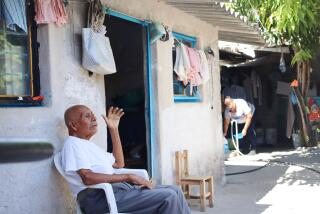BP runs pressure test before final sealing of gulf oil well
BP ran a pressure test Thursday to figure out whether the final step in its tortured effort to permanently seal its broken well in the Gulf of Mexico is necessary.
Federal officials have repeatedly said they will not consider the crippled well dead until BP has drilled into the bottom and plugged it. But engineers have raised the possibility that they may have accomplished that already with last week’s “static kill” operation, in which cement was pumped through the well’s top into its inner casing.
The procedure may have sent cement from the casing into the annulus, the outer ring of the well, essentially sealing it from the bottom. Or it may not have.
“One way or the other, the annulus will be sealed…. Our question is, did it already happen?” said retired Coast Guard Adm. Thad Allen, who is overseeing the spill response.
He hopes a four-hour pressure test, conducted Thursday, will provide an answer. “I wouldn’t rule out anything at this point,” he said. “We think it’s a low probability that we would not finish the relief well and cement. But we need to run the test and analyze the data.”
If BP and federal science teams decide to proceed with the relief well, a drill would chew into the base of original well sometime early next week, and the final cement seal would be poured. But if the pressure readings indicate the well bottom is already plugged, Allen could declare a final victory before the weekend.
The test is simple. Engineers drew down pressure in the well cap and then watched. If the pressure went back up, that indicated oil was still flowing from its reservoir miles beneath the seabed into the annulus. If the pressure stayed steady, that suggested cement in the annulus bottom was blocking the oil.
If the base is already plugged and BP finishes the relief well and pumps in more cement, there is concern about creating pressure that could damage the well cap or possibly rupture the bottom seal.
“We want to make sure we don’t engage in a series of events that could enable that,” Allen said.
After BP and federal scientists analyze the pressure readings, they will recommend the next step to Allen, who said he would decide no later than Friday what to do.
BP suspended the relief well operations this week while a tropical depression blew through the gulf. The storm system was on its way out Thursday, allowing engineers to run the pressure test and prepare to resume the relief drilling.
In another development Thursday, the Department of Labor announced that BP had agreed to pay a $50.6-million fine in connection with a 2005 explosion at its Texas City, Texas, refinery that killed 15 workers and injured 170.
The settlement, on top of earlier fines stemming from the explosion, resolves 270 citations alleging that BP failed to fix problems identified after the accident. “The size of the penalty rightly reflects BP’s disregard for workplace safety,” Labor Secretary Hilda L. Solis said in a statement.
BP officials said the agreement demonstrated their commitment to improving conditions at the refinery. “We have significantly improved the safety of our operations at Texas City over the last five years and are determined to carry this effort forward effectively in the future,” Steve Cornell, head of BP’s U.S. refining operation, said in a statement.
bettina.boxall@latimes.com
More to Read
Start your day right
Sign up for Essential California for news, features and recommendations from the L.A. Times and beyond in your inbox six days a week.
You may occasionally receive promotional content from the Los Angeles Times.







